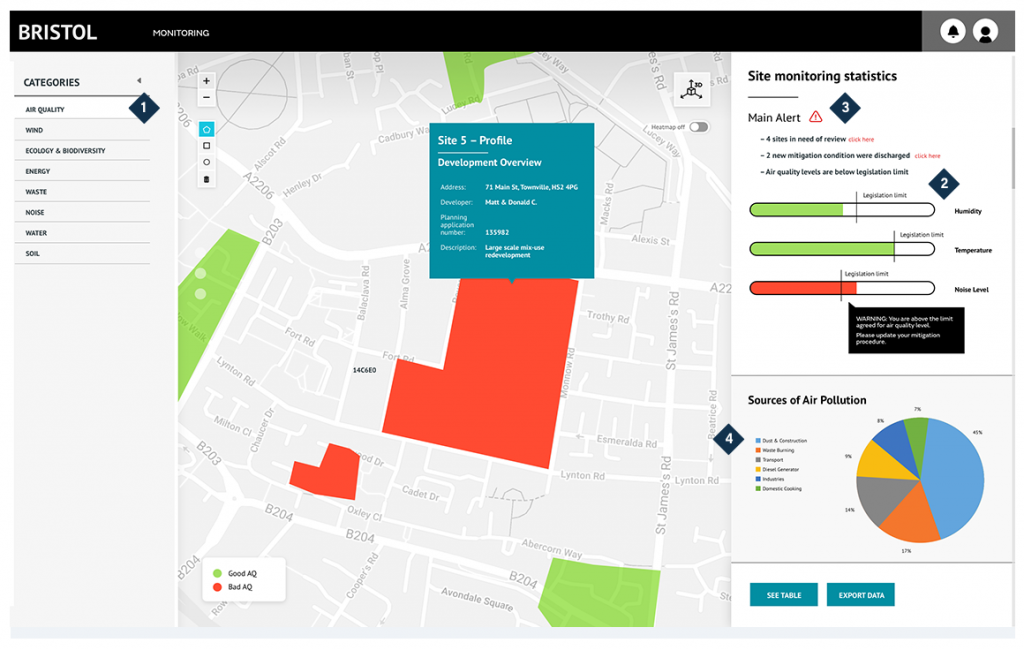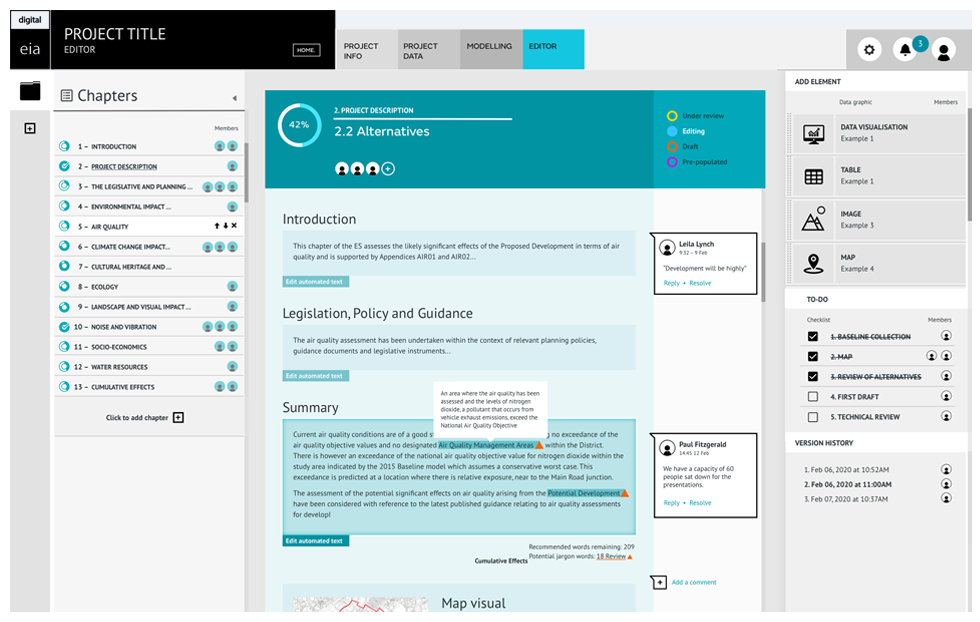A ‘must-do’ process that will improve the quality of mitigation and data
Following completion and during operation of a development, data is rarely collected about the actual impact of a development and whether mitigation measures were successful or not. This means there is no feedback loop detailing whether the tools and methods used to predict the effects during the EIA process and the mitigation measures applied have been effective or not.
There are various benefits associated with encouraging post-application monitoring, and we have explored three ways in which it could be encouraged, collected and utilised.

Impact
- Data, processes, policy and regulations will be improved through a feedback loop of data detailing whether predicted impacts were correct and mitigation measures performed as expected
- Promotes accountability of developers and EIA consultants in their EIA processes and predictions. Currently, EIA experts estimate that only approximately 10% of developments monitor impacts during the operational phase (source: surveys and interviews)
- Improved trust from the public in the EIA process through opening up this data
Screen 1 – Utilising Monitoring data – Monitoring Dashboard (Area view)
Monitoring dashboards could be developed for local authorities or other reviewing bodies and would collate monitoring data being collected in an area and visualise it on a map, showing the impact of a development on the environment over time. The tool could store data from monitoring, and link to the Datahub to enable a wealth of data to inform future mitigation measures, and scoping approaches. Other dashboards could also be developed for use by developers, EIA consultants and even the general public:

- Select the category of environmental impacts you want to view
- See the cumulative environmental impact of developments in your area and compare with legislation
- An alert function notifies users which developments are exceeding their predicted impacts
- Provides a breakdown of key sources having an impact.
Screen 2 – Utilising Monitoring data – Monitoring Dashboard (Site specific)
The dashboard could be used to view site specific monitoring data as well as area data. It includes a conditions tracker feature where data detailing whether additional mitigation imposed through planning have been discharged:

- View agreed mitigation measures
- View the level of impact against key legislation
- View a comparison of predicted environmental impacts of a scheme vs actual impact over time
- Data can be exported for use in other reporting documents, or to be used to inform future EIA assessments.
Encouraging monitoring-data collection – Accreditation

Accreditations and certifications are already used in the construction industry to incentivise particular behaviours from developers, consultants and construction organisations. This is one way that developers and other stakeholders could be encouraged to conduct Post-Application Monitoring – receiving an official accreditation, a mark of recognition, for continuing to monitor (and mitigate) the developments effect on the impact during and beyond the construction phase.
Collecting monitoring-data – Citizen Science

Whilst it wouldn’t be the only way of collecting data for the Monitoring Dashboards and Datahub, Citizen Science – the practice of public participation and collaboration in scientific research to increase scientific knowledge – is a quick and effective way to collect large amounts of data whilst also encouraging transparency and public engagement.
There are some great examples of this already happening across the world, from detecting cancer to monitoring dolphins. Applying this to EIA monitoring by opening up the Datahub to innovation has the potential to change the face of EIAs and the way they use and collect data.



